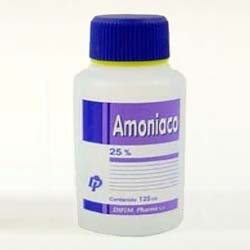 In 1923, Bronsted and Lowry independently proposed a theory to explain the acid-base behavior of substances, in which acids are proton donors while bases are proton acceptors.
In 1923, Bronsted and Lowry independently proposed a theory to explain the acid-base behavior of substances, in which acids are proton donors while bases are proton acceptors.
This theory naturally explains, unlike Arrhenius, the basic behavior of ammonia.
$NH_3 + H_2O \rightleftharpoons NH_4^+ + OH^-$
Water acts as an acid by donating a proton to ammonia, which in turn acts as a base. Water becomes its conjugate base; the hydroxide ion. While ammonia is converted to its conjugate acid; the ammonium ion.
This proton transfer between water and ammonia releases hydroxide ions into the medium, responsible for the basicity of the solution.
Since ammonia is a weak base, the reaction is not completely shifted towards the products, equilibrium being represented by a double arrow.
Equilibria of weak acids and weak bases are described by an equilibrium constant, called the acidity or basicity constant.
$K_b=\frac{[NH_4^+][OH^-]}{[NH_3]}$
Water acts as a solvent, its concentration not changing during the base dissociation process and is not included.
in the equilibrium constant.
If we consider the dissociation of acetic acid in water, we have:
$AcOH + H_2O \rightleftharpoons AcO^- + H_3O^+$
The ionization constant of the acid is given by:
$K_a=\frac{[AcO^-][H_3O^+]}{[AcOH]}$
In the case of strong acids, such as HCl, the dissociation is so important that they present a very high equilibrium constant (of the order of $10^6$), which makes it possible to treat the dissociation of this type of acid as complete. We indicate this fact by writing the ionization equation with a single arrow.
$HCl \rightarrow H^+ +Cl^-$



